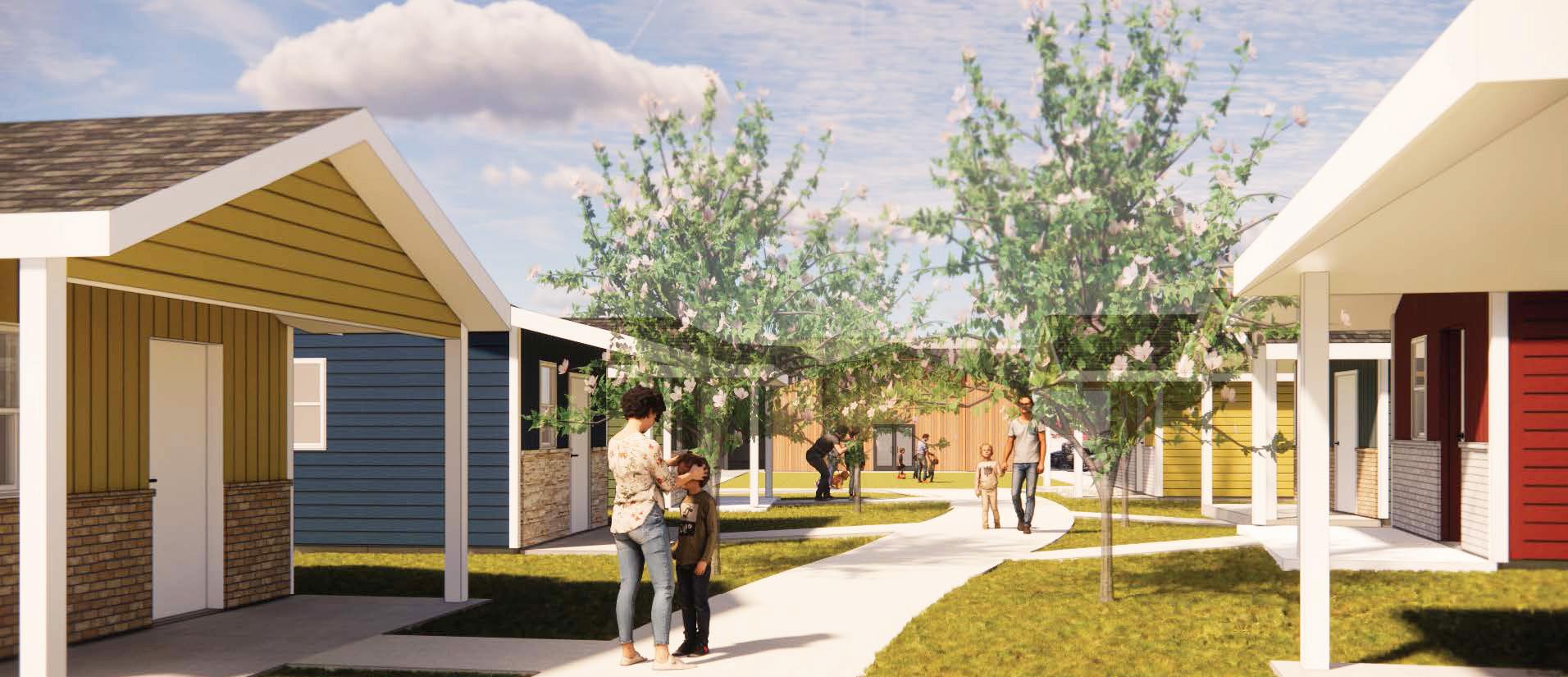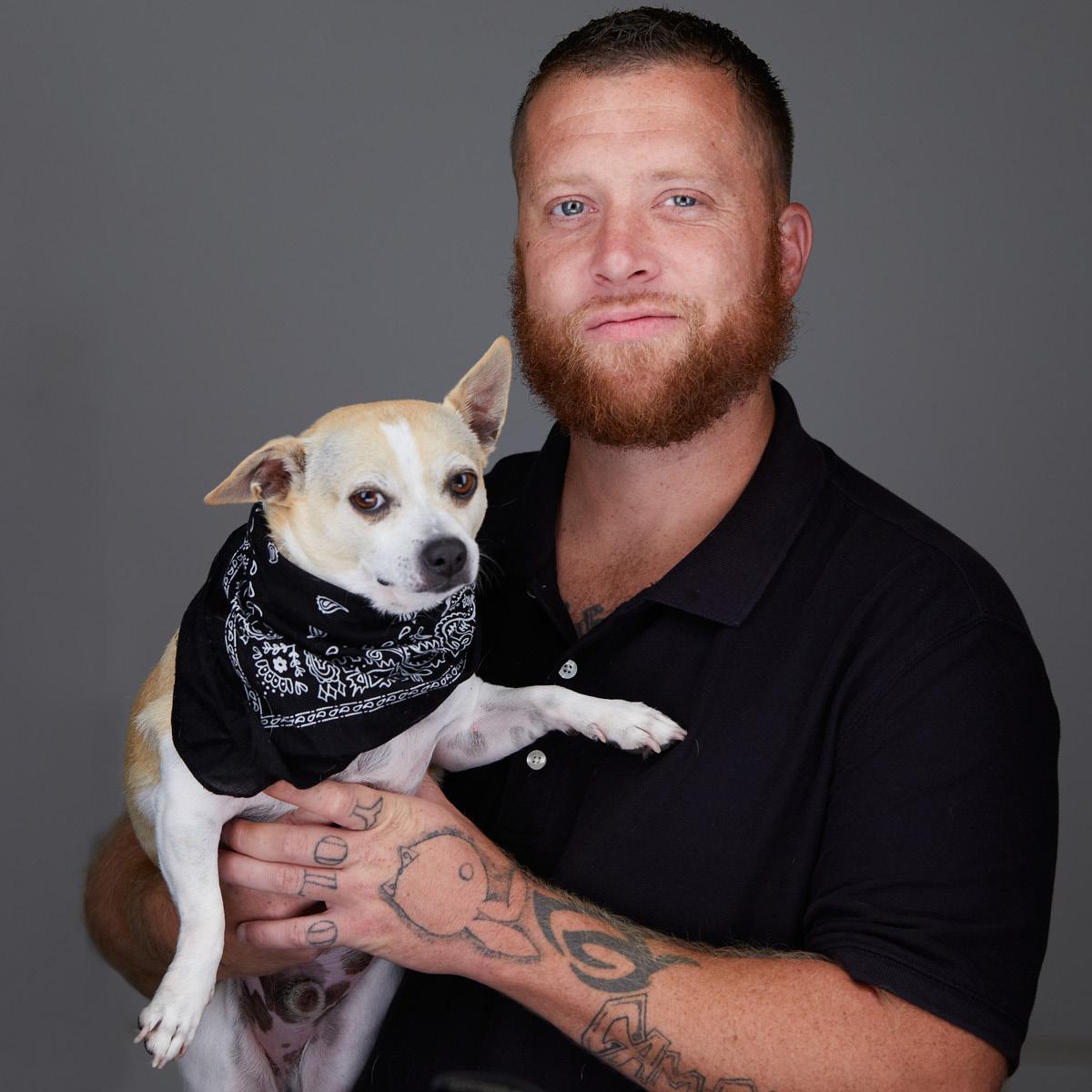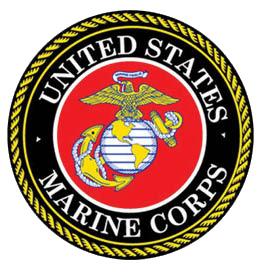
The Milwaukee Community
How many unhoused Veterans live in the Milwaukee metro area?
According to the U.S. Department of Housing and Urban Development, approximately 10% of the homeless population once served our country.
How is VCP different from other Veteran organizations?
Veterans Community Project serves all Veterans, regardless of disability status, age, or VA-eligibility. Each tiny home has a full kitchen and bathroom, encouraging residents to develop or strengthen skills necessary for independent living.
Is VCP part of the VA?
VCP is not affiliated with the VA; however we have a “partner, not compete” mentality and work hard to build relationships with other programs and organizations also committed to meeting the needs of Veterans.
How will VCP impact the surrounding neighborhood?
VCP's campus will not only provide critical housing resources but will:
• Beautify an unused area, increasing property values of surrounding homes and businesses
• Provide ongoing opportunities for community volunteerism
• Strengthen Milwaukee's social services sector
• Become as a source of civic pride
• Improve the safety of the surrounding neighborhood

The Tiny Homes & Campus
How are the homes constructed?
The tiny homes are stick-built and comply with current building codes (ICC IBC-2021). They are built on concrete foundations and connect to city utilities. Approximately 70% of the construction will be performed by community volunteers.
How many homes will be built?
The Milwaukee campus will include 32 single-resident homes and 8 family homes. Single homes are 240 sq. ft; family homes are 320 sq. ft. and sleep up to 5 individuals.
Do the residents have their own kitchens and bathrooms?
Yes. Each home has a fully functional kitchen and bath. VCP is intentional about building communities that are mindful of homeless and military post-traumatic stress; creating a sense of privacy and safety is key.
Do the residents own their home? What do they pay?
The Veterans do not own their home; however, the tiny house furniture and household items become their personal property and go with the Veteran when they

"I can’t say how much I’m thankful. This is gonna change my life. "
 Bruce Veteran, U.S. Navy
Bruce Veteran, U.S. Navy
are ready to transition to permanent housing. Veterans do not pay rent or utilities while living in VCP Village; their investment in the program is their investment in themselves.
Veteran Support Services
Can VCP serve Veterans who do not qualify for VA benefits?
Yes. VCP supports all individuals who took an oath to serve this country. Many Veterans have been historically excluded from VA services because of discharge status, type, or length of service. VCP remains dedicated to serving all Veterans, regardless of VA qualifications for benefits.
How does VCP define homelessness?
VCP follows the government definition of homeless (individual who is without a roof over their head for 60-90 days). We also recognize others who could be seen as homeless, but do not fall under the government definition, such as Veterans who "couch surf" or live in their car, for example.
How do Veterans get into the program?
Veterans are identified through referrals from community partners or VCP's outreach efforts. Veterans are assessed and prioritized for housing based on their vulnerability and need.
Do you keep a waiting list?
No. We have found that keeping a list often leads to Veterans turning down other forms of housing and remaining homeless while waiting for a vacancy at VCP. Also, and most importantly, an individual's circumstances can change quickly, and those who are in crisis today may have stabilized by the time
there is a vacancy.
What support services are available to Village residents?
VCP maintains a 1:10 case manager to Veteran ratio which allows more time to be spent with each Veteran. The Village offers sanctuary and the emotional space needed for each Veteran and VCP’s specially-trained team to thoroughly address the underlying causes of his or her homelessness. With the support of their case managers and battle buddies, Veterans work to achieve incremental, lasting results in the areas of health and wellness, income stability, education and training, fiscal understanding, and the development of a personal support network. Once the Veteran’s individual goals are met, VCP assists him or her in securing a permanent housing solution and transitioning to a new life.
How long can a Veteran live in VCP Village?
Veterans work closely with their case manager to set incremental goals that result in permanent housing readiness. While the program moves at the Veteran's pace, the average length of stay is 14 months.
How do you address a participant who is not progressing in the program?
Case managers work with the Veteran to understand why they are not making progress, address the identified issues, and design a plan to move forward. If they do not progress, staff and leadership will decide on the next steps.
How does VCP address substance abuse?
VCP follows a harm-reduction model, and it is relative to each Veteran and their case manager what that program looks like. Hard drugs like meth, crack and cocaine are not tolerated.
Is VCP housing available to non-veterans?
VCP houses Veterans and their families exclusively.
Are pets allowed?
Yes. Pets have a necessary and needed role in the recovery of many homeless Veterans. Homelessness is a process that leads to isolation. Oftentimes pets are the first form of support for these individuals.

How is VCP funded?
The organization is largely privately funded; government funding is only accepted if it does not who we serve or how we administer our program.
What types of volunteer opportunities are available?
VCP offers a variety of volunteer opportunities throughout construction and once the Village is complete. Individuals and groups can register online at VCP.org to receive notifications of upcoming events or needs.
When will the Village be complete?
VCP's construction schedule is directly tied to our fundraising efforts. The capital campaign is organized into 5 phases: Infrastructure, Village Center "A," tiny homes "A," tiny homes "B," Village Center "B," Construction begins as funding for each phase is complete.

816 599 6503 x1114

"I never would have gone to college if it weren't for the support I received here. I will ever be homeless again. "

Chris VCP Alumni (KC)
